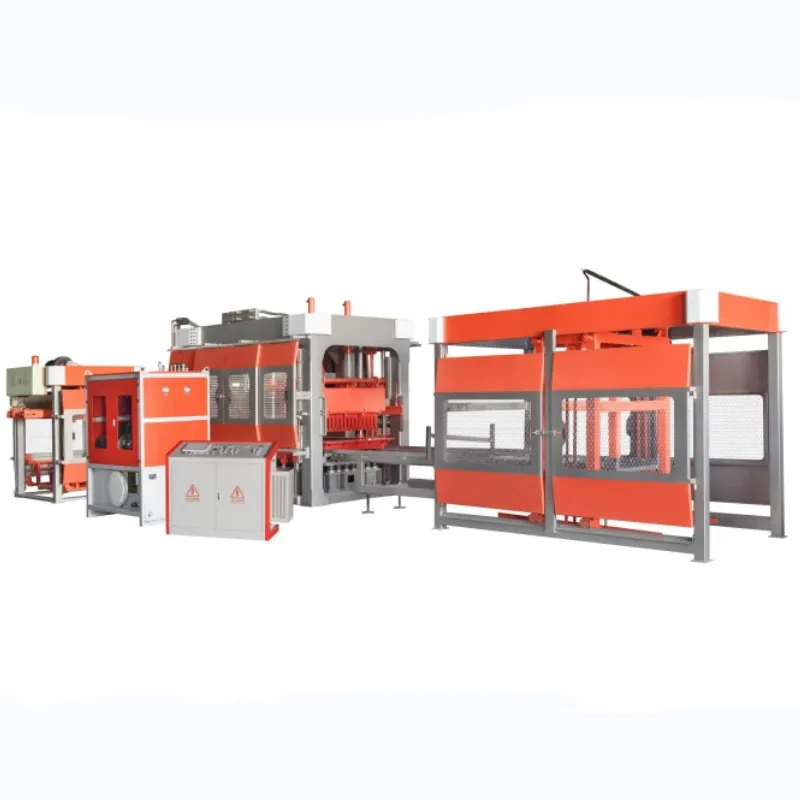What is the Best Way to Remove Concrete from Molds?
23 dic 2024
Removing concrete from molds efficiently and without damage is a crucial step in block production. Whether you are working with concrete pavement moulds, concrete block making moulds, or concrete brick molds, understanding the best methods will ensure smooth operations and high-quality results. In this guide, we will explore proven techniques that improve mold removal while extending the lifespan of your equipment.

Key Techniques for Efficient Mold Removal
1. Use of Proper Release Agents
One of the most effective ways to remove concrete from molds is by using high-quality release agents. These agents reduce friction between the concrete and the mold, making it easier to remove the block after curing. When dealing with concrete pavement moulds o concrete block making moulds, applying a thin, even coat of release agent before pouring concrete will prevent the material from sticking to the mold.
- Tip: Choose a non-toxic, environmentally friendly release agent that is safe for both the workers and the environment.
- Why it matters: Using release agents reduces wear on your moulds, prolonging their lifespan and ensuring that your molds remain in good condition.
2. Proper Curing Time
Allowing the concrete to cure fully before attempting to remove it from the mold is crucial. Premature removal can lead to cracks or deformations, especially with concrete brick molds. Curing time varies depending on the thickness of the concrete, environmental conditions, and the type of mix used.
- Tip: Always follow the manufacturer’s recommended curing time for the specific mold and concrete mixture.
- Why it matters: Proper curing ensures that the block retains its shape and strength, preventing defects that could lead to rework or product rejection.
The Role of Vibrations in Mold Removal
3. Vibration to Settle Concrete
Vibrating the mould during the concrete pour helps to settle the mixture and fill all corners and edges of the mold. This process is particularly important for intricate concrete block making moulds y concrete brick molds, where even the smallest air pockets can compromise the final product’s strength.
- Tip: Use a high-quality vibrator to ensure that the concrete fills the mold evenly and completely.
- Why it matters: Proper vibration prevents air pockets and ensures the integrity of the final block, reducing defects and waste.
4. Controlled Vibrations to Facilitate Removal
Vibrations can also aid in the removal process by loosening the concrete from the mold. Gently vibrating the mold after the concrete has set will help release it without causing damage.
- Tip: Avoid excessive vibration that could damage the mold or lead to cracking in the concrete.
- Why it matters: Controlled vibration reduces the risk of breakage or damage to the mold, ensuring smooth operations and high-quality output.
Temperature Control During Mold Removal
5. Managing Temperature for Easy Removal
The temperature of the concrete and mold plays a significant role in mold removal. Extreme temperatures can cause the mold material to contract or expand, potentially leading to damage. Ensure that both the mold and concrete reach an optimal temperature before attempting removal.
- Tip: Use temperature-controlled curing systems to maintain a consistent environment.
- Why it matters: Stable temperatures help prevent thermal shock, which could cause cracks in the concrete or mold.
6. Cooling Down the Mold Before Removal
Allowing the mold to cool down before attempting removal can prevent the risk of deformation. A gradual cooling process ensures that the concrete sets properly without affecting the mold’s shape or the quality of the concrete block.
- Tip: Avoid rapid cooling methods such as using water sprays, which can create temperature shocks.
- Why it matters: Gradual cooling helps maintain the shape of both the mold and the concrete block, ensuring optimal quality.
Inspection and Maintenance of Molds for Long-Term Use
7. Regular Mold Maintenance
To ensure smooth mold removal, regular maintenance of your concrete block making moulds y concrete brick molds is essential. Inspect the molds frequently for any signs of wear, cracks, or buildup of concrete residue.
- Tip: Clean the molds after every use to prevent concrete buildup that can interfere with the removal process.
- Why it matters: Regular maintenance keeps your molds in good condition, reducing downtime and replacement costs.
8. Storage and Protection
Proper storage of molds is key to their longevity. After use, molds should be cleaned, dried, and stored in a controlled environment to prevent rust and corrosion.
- Tip: Store molds in dry, cool conditions, and ensure they are well-protected from extreme weather.
- Why it matters: Proper storage ensures that your molds remain functional for longer, reducing the need for costly replacements.
Why Choose KBL Machinery for Your Moulding Needs?
At KBL Machinery, we specialize in high-quality concrete pavement moulds, concrete block making mouldsy concrete brick molds. Our molds are designed for durability, precision, and efficiency, helping you improve production and reduce costs. Whether you’re looking for standard molds or custom solutions, we offer a wide range of options tailored to your business needs.
With over 20 years of experience, KBL Machinery has earned a reputation for providing innovative and reliable construction equipment. Our team of experts is committed to delivering top-tier products that meet the demands of modern construction, ensuring you can rely on our solutions for years to come.
We look forward to collaborating with businesses worldwide to drive success in your operations.
